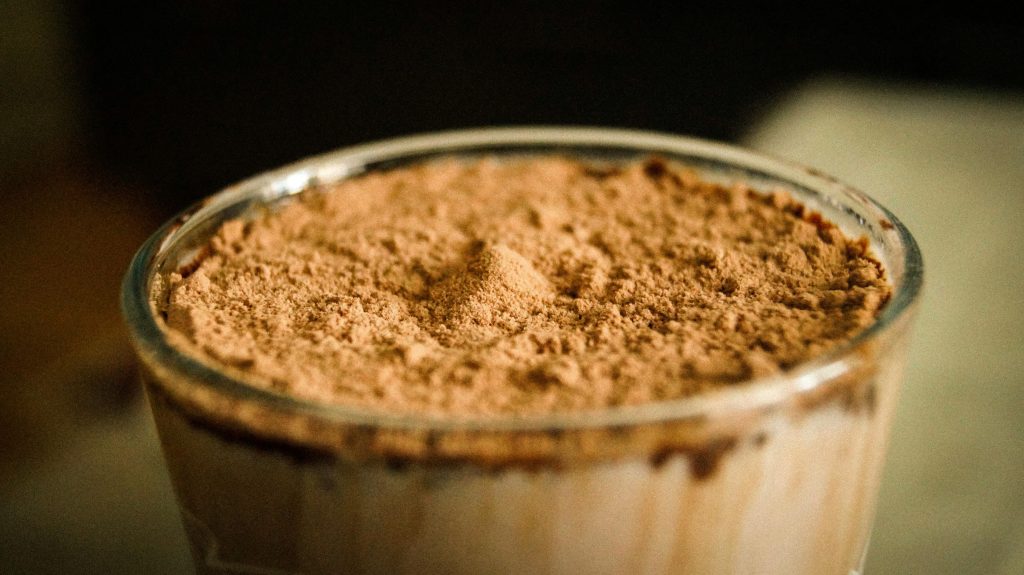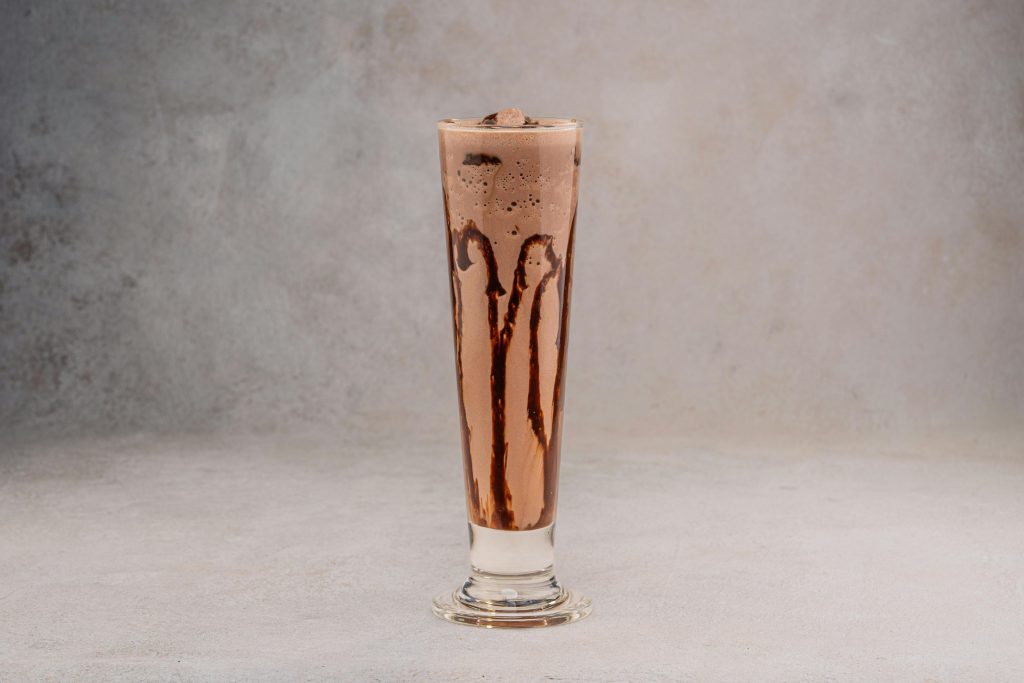
Research Shows Chocolate Milk is More Effective Than Energy Drinks

Chocolate Milk: The Surprising Superdrink for Athletic Recovery
Picture the moment after an intense workout: your muscles ache, your body is desperate to refuel, and your mind searches for the perfect drink to restore strength. For years, brightly colored sports beverages and highly caffeinated energy drinks have dominated that space, promising rapid recovery, hydration, and sustained energy. Yet, research is revealing that the real champion of post-exercise recovery may have been hiding in plain sight all along—within a familiar, creamy glass of chocolate milk.
Recent studies suggest that chocolate milk doesn’t just compete with these commercial recovery drinks—it may actually outperform them. From teenage athletes to seasoned professionals, people are discovering that this nostalgic beverage delivers a powerful and scientifically supported mix of nutrients that restore energy, rebuild muscles, and improve overall recovery. Unlike artificial sports drinks that often emphasize only hydration or stimulants, chocolate milk provides a holistic nutritional package that supports both body and performance.
As the conversation around nutrition and fitness evolves, it’s worth asking: how does something so simple become so effective? The answer lies in the unique balance of carbohydrates, protein, and micronutrients that make chocolate milk more than just a sweet treat—it’s a true recovery tool.
The Science Behind Chocolate Milk’s Recovery Power
Chocolate milk’s effectiveness begins with its natural 3:1 ratio of carbohydrates to protein. Sports nutrition experts widely recognize this balance as optimal for replenishing glycogen stores and promoting muscle repair after exertion. Carbohydrates quickly restore lost energy, while protein provides the amino acids necessary for rebuilding torn muscle fibers.
Unlike most sports drinks, which contain only carbohydrates and electrolytes, chocolate milk provides two different proteins—whey and casein. Whey is absorbed rapidly, kickstarting the repair process almost immediately, while casein digests more slowly, continuing to feed muscles with amino acids for hours. This dual mechanism creates a longer recovery window, something carbohydrate-only beverages simply cannot match.
Scientific research backs up these advantages. Studies published in Applied Physiology, Nutrition, and Metabolism and other journals show that chocolate milk not only restores hydration and electrolyte balance but also reduces muscle soreness and speeds up recovery. Athletes who consume it are often able to train harder in subsequent sessions—a critical factor for competitive performance.
Beyond macronutrients, chocolate milk offers calcium, vitamin D, potassium, phosphorus, riboflavin, and vitamin B12. These micronutrients contribute to strong bones, healthy energy metabolism, and immune support, underscoring that recovery isn’t just about muscles—it’s about the whole body.
Real-World Studies: Chocolate Milk in Action

Laboratory results are compelling, but what really sets chocolate milk apart are field studies involving athletes.
At the University of Texas at Austin, nearly 100 high school athletes participated in a five-week training program. One group drank chocolate milk after workouts, while the other consumed a carbohydrate-only sports beverage. By the end, the chocolate milk group increased bench-press strength by 3.5%, while the sports drink group actually saw a decline of 3.2%. Squat performance showed even more dramatic results: the chocolate milk group improved by 15%, nearly double the 8% increase in the sports drink group.
A second study in a summer sports camp reinforced these findings. Over seven weeks, athletes who consumed store-bought chocolate milk gained an average of 20.5 kilograms in composite strength, compared to just 4.8 kilograms for those using a carbohydrate-rich drink without protein. These real-world improvements demonstrate that chocolate milk isn’t just effective in theory—it works in everyday training environments.
Endurance athletes also benefit. In one study with futsal players, chocolate milk consumption extended the time athletes could perform before exhaustion compared to both placebo drinks and other carb-protein blends. The additional carbohydrates and electrolytes in chocolate milk appeared to provide sustained fuel and hydration, keeping athletes going longer.
Practical Benefits Beyond the Lab

Science aside, chocolate milk has real-world advantages that explain why coaches, parents, and athletes gravitate toward it. First and foremost, it is accessible and affordable. Unlike specialized powders or recovery supplements, chocolate milk is found in nearly every grocery store, cafeteria, and corner shop. It requires no mixing, preparation, or refrigeration packs—athletes can grab it and go.
Its familiar taste is another advantage, particularly for younger athletes. While many teens resist nutrient-dense recovery drinks with bitter or artificial flavors, chocolate milk feels like a treat, encouraging consistent use. Parents also appreciate that it provides calcium and vitamin D critical for developing strong bones during growth years, without the excessive added sugars found in sodas or fruit-flavored sports beverages.
Critics sometimes raise concerns about sugar content, but the natural lactose in milk plus a modest amount of cocoa sweetness make chocolate milk far less sugary than most soft drinks. And when consumed in the context of recovery—when muscles actually need glucose—the sugar becomes functional fuel rather than an empty calorie.
Expert Opinions and Coaching Practices

Nutrition experts increasingly recognize chocolate milk as a legitimate, science-backed recovery drink. Dr. Stacy Sims, a respected exercise physiologist, notes that the synergy of carbohydrates, protein, and electrolytes makes chocolate milk a “simple yet powerful option” for athletes across sports.
Registered dietitians often echo this perspective, with some pointing out that moderation is key. As dietitian Keri Gans explains, the nutrient density of chocolate milk outweighs its sugar content when used as part of a balanced diet, especially compared to many energy drinks packed with caffeine and artificial additives.
On the field, coaches are embracing it too. Many now include chocolate milk in official post-practice routines, citing its effectiveness in reducing delayed-onset muscle soreness (DOMS) and accelerating recovery between games. As one coach summarized, “It’s rare to find something athletes actually want to drink that also works this well. Chocolate milk checks both boxes.”
Why Chocolate Milk Belongs in Your Recovery Routine

The growing body of evidence paints a clear picture: chocolate milk is not just a nostalgic comfort drink—it’s a functional recovery aid backed by science. Its unique blend of carbohydrates, proteins, and micronutrients helps rebuild muscle, replenish energy, restore hydration, and support overall wellness.
Just as importantly, it is accessible, cost-effective, and appealing, making it a practical option for athletes at every level—from middle school students to elite professionals. In a sports world often dominated by expensive supplements and flashy products, chocolate milk reminds us that sometimes the simplest solutions are the most effective.
So next time you finish a workout—whether in the gym, on the field, or after a long run—consider reaching for a glass of chocolate milk. Your muscles, bones, and body will thank you, and you may find that this humble drink outperforms the very products designed to replace it.
News in the same category


Effective Methods to Keep Ginger Fresh for Extended Periods

The Truth About Eating the Black Vein in Shrimp Tails

Steps to Take When Your Adult Children No Longer Show Respect

5 Most Common Deathbed Regrets, According to Palliative Care Nurse

Robert F. Kennedy is Reportedly Pushing to Ban All Sodas & Candy From U.S. Food Stamp Benefits. Thoughts?

Donald Trump Asks Supporters To Donate $15 To ‘Get Him To Heaven’

Why Are Mirrors Commonly Installed in Elevators? The Unexpected Benefits of Elevator Mirrors

9 things you should never plug into a power strip

The Spiritual Meaning of Black Butterflies Entering Your Home Revealed
Black butterflies carry meanings that are as complex as they are beautiful.

Add This Simple Ingredient to Your Mop Water and Keep Floors Shiny for Weeks
You don’t need fancy, high-priced cleaners to enjoy spotless, long-lasting results.

The Secret Use of the Tiny Hole in a Safety Pin Finally Revealed
That tiny hole in a safety pin is more than just decoration—it’s a brilliant example of how even the simplest tools can hold hidden design secrets. W

Unbelievable amount Trump’s net worth has risen since taking office for second term

What the Shape of Your Legs Might Say About Your Personality

Weird Toothed Part on Kitchen Scissors

Ring Finger Longer Than An Index Finger

The Story Behind Two Runaway Graves in Savannah Airport

The Simple Object That Might Baffle the Younger Generation

Why Public Bathroom Doors Don’t Reach the Floor – The Real Reason Revealed
The gaps and inward-swinging doors are designed for practicality, serving purposes like enhancing safety and improving efficiency, rather than being the result of poor design.
News Post

Treat premature gray hair with this cheap black hair dye recipe using star fruit and potatoes!

Tips for using rice water and ginger to incubate hair to help hair grow quickly, thick and shiny

10 Warning Signs Your Body Is Full Of Parasites And 7 Foods That Can Help Kill Them

How to Kill the Bacteria Causing Heartburn and Bloating

The Hidden Warning Signs of Iron Deficiency—and How to Fix It

Beat a Sinus Infection Fast with These Natural Remedies

Golden tips for choosing ham: Identify borax with a simple, absolutely safe method

What are the benefits of aloe vera? 11 benefits of aloe vera for health and skin

Smart Travelers Always Photograph Their Luggage Before Checking It In — Here’s Why

The Last Part of the Pig But One of the Most Beneficial

When Goosebumps May Be a Warning Sign

❗Avoid Cloves If You Have These Health Issues – What Doctors Rarely Warn You About

6 Coffee Eye Masks to Get Rid of Dark Circles | Under Eye Wrinkles | Eye bags & Puffy Eyes

What Happens To Your Blood Pressure When You Eat Bananas

Why Your Hands Go Numb While You Sleep

Reason For Spots On Hands

Easy Clove Growing: Seed to Spice

Clove Oil: Wrinkle Free Flawless Skin At Any Age
